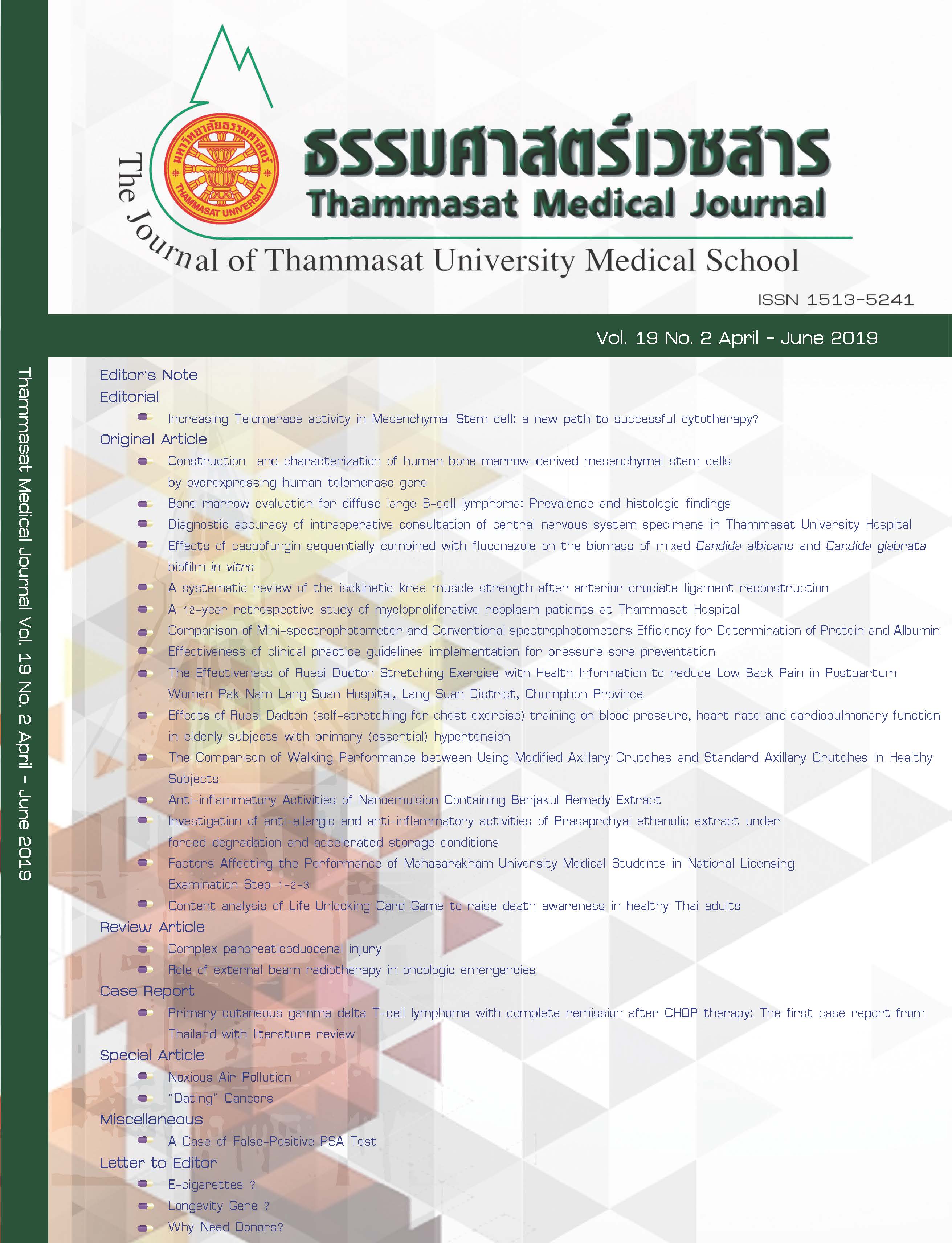Effectiveness of clinical practice guidelines implementation for pressure sore preventation
Keywords:
Effectiveness, Clinical practice guidelines, Pressure sore, Cardiovascularthoracic surgery patients, ICUAbstract
Introduction: The pressure sores in patients has become a major complication that can cause infection and death. Therefore, pressure sore prevention is a high priority. The purposes of this research were to study effectiveness of clinical practice guidelines implementation for pressure sore preventation.
Methods: The purposive sampling method was used in this study. The samples consisted of 18 health care personnel and 44 patients aged over 20 years who had no pressure sore and had moderate to high score from Braden risk scale, being admitted at cardiovascularthoracic intensive care unit. The process for implementation of the CPGs utilized the framework from The Australian National Health and Medical Research Council (NHMRC, 1998) was applied. The instruments used in this study were: 1) CPGs for pressure sore prevention, 2) pressure sore risk assessment scales, 3) pressure sore recording form, and 4) satisfaction assessment form for health care personnel. Data were analyzed using Fisher’s exact probability test.
Results: The incidence of pressure sores after the implementing CPGs for pressure sores prevention in patients was lower than before at a statistically significant level of 0.05. The satisfaction of CPGs implementation was evaluated at a high level by 88.9% of health care personnel.
Conclusion: The findings of this study demonstrate that implementation of CPGs for prevention of pressure sores in patients is effective in reducing the incidence of pressure sores. Therefore, CPGs implementation for pressure sore prevention in patients should be implemented to improve of care for patients.



